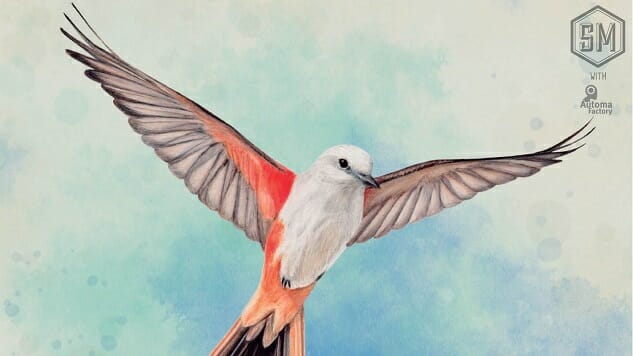Wingspan Is about as Perfect as Board Games Get

Wingspan is the hottest new board game of 2019, already getting mainstream media attention right at its release to retail, which is just about unprecedented in tabletop. It’s thoroughly deserved by the game’s merits, though. It has a great back story, but that doesn’t get you very far once the game hits the table and people have to play it. Wingspan more than delivers from start to finish, with simple, easy-to-learn mechanics, a scoring setup that offers multiple paths to victory without devolving into point-salad nonsense, gorgeous components, and, most importantly, it’s fun
Created by Elizabeth Hargrave, a public policy analyst by training who enjoys birdwatching as a hobby, Wingspan is a game of ornithological set collection with a truly elegant engine-building mechanic that even younger or newbie players can appreciate. Over the course of four rounds and 26 total actions, players will try to play bird cards to their personal boards, then using actions to gather food and lay eggs, while also meeting various criteria on bird sizes, feeding habits, habitats, or even names to score more points. It’s a great game of options where you will have too many things you want to accomplish and not enough turns to get everything done.
The core mechanic in Wingspan is playing birds, although we quickly started referring to it as “building” birds because that’s just our habit. Each bird has a specific cost in food tokens; there are five types, and birds may require one to three tokens, possibly specific types. A bird card may also restrict to which of the three habitats on your board you may play it. Your board has 15 spaces across those three rows; playing a card to the first column requires no extra cost, but the second and third columns require you to also discard one egg from any bird on your board, and the fourth and fifth require you to discard two eggs. (You can’t make an omelet without… you know the rest.) Some bird cards give you an immediate, one-time bonus when played; some have a pink stripe that give you some benefit when another player does something (e.g., chooses the lay eggs action) between your turns.
Playing a bird costs one action, but you have three other choices for your actions, each tied to one of the habitat rows. The top row allows you to gather one to four food tokens; the middle to lay two to four eggs, and the bottom to draw one to three new bird cards. Those actions become more powerful as you play more bird cards, however, because you place an action cube on the leftmost empty space in that row, and then ‘activate’ any bird card with a brown stripe and action printed on it that sits in the row, moving right to left. Thus selecting and playing bird cards early in the game can bring recurring benefits as the game progresses, and further inform what cards you try to select and play later.
-

-

-

-

-

-

-

-

-

-

-

-

-

-

-

-

-

-

-

-

-

-

-

-

-

-

-

-

-

-

-

-

-

-

-

-

-

-

-

-









































